30-5-2010
ਸੋਰਠਿ ਮਹਲਾ ੫ ॥ ਰਾਜਨ ਮਹਿ ਰਾਜਾ ਉਰਝਾਇਓ ਮਾਨਨ ਮਹਿ ਅਭਿਮਾਨੀ ॥ ਲੋਭਨ ਮਹਿ ਲੋਭੀ ਲੋਭਾਇਓ ਤਿਉ ਹਰਿ ਰੰਗਿ ਰਚੇ ਗਿਆਨੀ ॥੧॥ ਹਰਿ ਜਨ ਕਉ ਇਹੀ ਸੁਹਾਵੈ ॥ ਪੇਖਿ ਨਿਕਟਿ ਕਰਿ ਸੇਵਾ ਸਤਿਗੁਰ ਹਰਿ ਕੀਰਤਨਿ ਹੀ ਤਿ੍ਪਤਾਵੈ ॥ ਰਹਾਉ ॥ ਅਮਲਨ ਸਿਉ ਅਮਲੀ ਲਪਟਾਇਓ ਭੂਮਨ ਭੂਮਿ ਪਿਆਰੀ ॥ ਖੀਰ ਸੰਗਿ ਬਾਰਿਕੁ ਹੈ ਲੀਨਾ ਪ੍ਭ ਸੰਤ ਐੈਸੇ ਹਿਤਕਾਰੀ ॥੨॥ ਬਿਦਿਆ ਮਹਿ ਬਿਦੁਅੰਸੀ ਰਚਿਆ ਨੈਨ ਦੇਖਿ ਸੁਖੁ ਪਾਵਹਿ ॥ ਜੈਸੇ ਰਸਨਾ ਸਾਦਿ ਲੁਭਾਨੀ ਤਿਉ ਹਰਿ ਜਨ ਹਰਿ ਗੁਣ ਗਾਵਹਿ ॥੩॥ ਜੈਸੀ ਭੂਖ ਤੈਸੀ ਕਾ ਪੂਰਕੁ ਸਗਲ ਘਟਾ ਕਾ ਸੁਆਮੀ ॥ ਨਾਨਕ ਪਿਆਸ ਲਗੀ ਦਰਸਨ ਕੀ ਪ੍ਭੁ ਮਿਲਿਆ ਅੰਤਰਜਾਮੀ ॥੪॥੫॥੧੬॥
Nach Patlo - Ft.Lehmber,Pooja,Nachhatar Gill, More by mannu
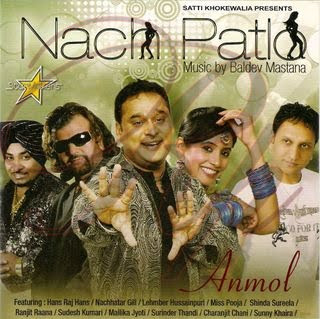
Nach Patlo - Ft.Lehmber,Pooja,Nachhatar Gill, More
= TrackList =-
1. Shinda Sureela & Miss Pooja - Billo Rani
2. Lehmber Hussainpuri - Nach Patlo
3. Nachhatar Gill - Es Janam
4. Malika Jyoti - Ni Sun Sasse
5. Ranjit Rana - Nachiye
6. Hans Raj Hans - Rovengi
7. Surinder Thandi - Tuvi Nach
8. Sudesh Kumari - Pyaar
9. Sunny Khaira - Raunka
10.Charanjit Chani - Akhiyan
2. Lehmber Hussainpuri - Nach Patlo
3. Nachhatar Gill - Es Janam
4. Malika Jyoti - Ni Sun Sasse
5. Ranjit Rana - Nachiye
6. Hans Raj Hans - Rovengi
7. Surinder Thandi - Tuvi Nach
8. Sudesh Kumari - Pyaar
9. Sunny Khaira - Raunka
10.Charanjit Chani - Akhiyan
Full Album Download :
27-5-2010
ਰਾਗੁ ਧਨਾਸਿਰੀ ਮਹਲਾ ੩ ਘਰੁ ੪ ੴ> ਸਤਿਗੁਰ ਪ੍ਸਾਦਿ ॥ ਹਮ ਭੀਖਕ ਭੇਖਾਰੀ ਤੇਰੇ ਤੂ ਨਿਜ ਪਤਿ ਹੈ ਦਾਤਾ ॥ ਹੋਹੁ ਦੈਆਲ ਨਾਮੁ ਦੇਹੁ ਮੰਗਤ ਜਨ ਕੰਉ ਸਦਾ ਰਹਉ ਰੰਗਿ ਰਾਤਾ ॥੧॥ ਹੰਉ ਬਲਿਹਾਰੈ ਜਾਉ ਸਾਚੇ ਤੇਰੇ ਨਾਮ ਵਿਟਹੁ ॥ ਕਰਣ ਕਾਰਣ ਸਭਨਾ ਕਾ ਏੇਕੋ ਅਵਰੁ ਨ ਦੂਜਾ ਕੋਈ ॥੧॥ ਰਹਾਉ ॥ ਬਹੁਤੇ ਫੇਰ ਪਏੇ ਕਿਰਪਨ ਕਉ ਅਬ ਕਿਛੁ ਕਿਰਪਾ ਕੀਜੈ ॥ ਹੋਹੁ ਦਇਆਲ ਦਰਸਨੁ ਦੇਹੁ ਅਪੁਨਾ ਐੈਸੀ ਬਖਸ ਕਰੀਜੈ ॥੨॥ ਭਨਤਿ ਨਾਨਕ ਭਰਮ ਪਟ ਖੂਲ੍ੇ ਗੁਰ ਪਰਸਾਦੀ ਜਾਨਿਆ ॥ ਸਾਚੀ ਲਿਵ ਲਾਗੀ ਹੈ ਭੀਤਰਿ ਸਤਿਗੁਰ ਸਿਉ ਮਨੁ ਮਾਨਿਆ ॥੩॥੧॥੯॥
26-5-2010
ਸਲੋਕ ॥ ਸੰਤ ਉਧਰਣ ਦਇਆਲµ ਆਸਰੰ ਗੋਪਾਲ ਕੀਰਤਨਹ ॥ ਨਿਰਮਲµ ਸੰਤ ਸੰਗੇਣ ਓਟ ਨਾਨਕ ਪਰਮੇਸੁਰਹ ॥੧॥ ਚੰਦਨ ਚੰਦੁ ਨ ਸਰਦ ਰੁਤਿ ਮੂਲਿ ਨ ਮਿਟਈ ਘਾਂਮ ॥ ਸੀਤਲੁ ਥੀਵੈ ਨਾਨਕਾ ਜਪੰਦੜੋ ਹਰਿ ਨਾਮੁ ॥੨॥ ਪਉੜੀ ॥ ਚਰਨ ਕਮਲ ਕੀ ਓਟ ਉਧਰੇ ਸਗਲ ਜਨ ॥ ਸੁਣਿ ਪਰਤਾਪੁ ਗੋਵਿੰਦ ਨਿਰਭਉ ਭਏੇ ਮਨ ॥ ਤੋਟਿ ਨ ਆਵੈ ਮੂਲਿ ਸੰਚਿਆ ਨਾਮੁ ਧਨ ॥ ਸੰਤ ਜਨਾ ਸਿਉ ਸੰਗੁ ਪਾਈਐੈ ਵਡੈ ਪੁਨ ॥॥੧੭॥ ਆਠ ਪਹਰ ਹਰਿ ਧਿਆਇ ਹਰਿ ਜਸੁ ਨਿਤ ਸੁਨ
AUTODESK MOTIONBUILDER 2011 by mannu

AUTODESK MOTIONBUILDER 2011 | 1.09 GB
Autodesk MotionBuilder 2011 software delivers features that enable it to integrate more smoothly and reliably into production pipelines. With extended animation layers that closely match those in Autodesk Maya 2011 software, a more consistent method for handling materials, and native support for Autodesk FBX 2011 asset exchange technology, artists will find it easier to use MotionBuilder 2011 alongside certain other products. In addition, skinning and blendshape deformations are now calculated on the GPU, the in-viewport experience is significantly more interactive, and playback many times faster, while the Story Tool offers greater stability and performance.
My other Autodesk uploads:
AUTODESK AUTOCAD CIVIL3D WIN32 & WIN64
AUTODESK REVIT STRUCTURE 2011
AUTODESK REVIT ARCHITECTURE 2011
AUTODESK SOFTIMAGE 2011 WIN64
AUTODESK 3DSMAX DESIGN 2011 RETAIL (32Bit & 64Bit)
AUTODESK ALIAS DESIGN 2011 WIN32 & WIN64
AUTODESK ALIAS AUTOMOTIVE 2011 WIN32 & WIN64
AUTODESK.3DSMAX.V2011.RETAIL-ISO
AUTODESK MAYA 2011 WIN32 & WIN64
AUTODESK VAULT COLLABORATION 2011 PROPER ISO
AUTODESK SHOWCASE 2011 WIN32 & WIN64
AUTODESK ALIAS SURFACE 2011 WIN32 & WIN64
AUTODESK NAVISWORKS SIMULATE MULTI-LANGUAGE WIN32 & WIN64
AUTODESK NAVISWORKS MANAGE MULTI-LANGUAGE WIN32 & WIN64
AUTODESK INVENTOR PUBLISHER 2011 WIN32 & WIN64
Autodesk AutoCAD 2011 GERMAN WIN32 & WIN64
AUTODESK AUTOCAD 2011 MULTI-LANGUAGE WIN32 & WIN64
AUTODESK AUTOCAD INVENTOR SUITE 2011
AUTODESK VAULT COLLABORATION 2011
AUTODESK AUTOCAD ARCHITECTURE 2011 WIN32-64
AUTODESK AUTOCAD ELECTRICAL 2011 WIN32-64
AUTODESK AUTOCAD MECHANICAL 2011 WIN32
AUTODESK AUTOCAD MECHANICAL 2011 WIN64
AUTODESK AUTOCAD MEP 2011 WIN32
VTC Autodesk AutoCAD Mechanical 2010 Basic Concepts
VTC Autodesk AutoCAD Electrical 2010 Basic Concepts
VTC Autodesk Revit MEP 2010
Download:
http://hotfile.com/dl/37989434/9ecd3f7/ADSKMTNBLDRV2011-ISO.part1.rar.html
http://hotfile.com/dl/37989653/c115b4a/ADSKMTNBLDRV2011-ISO.part2.rar.html
http://hotfile.com/dl/37989886/d84aa99/ADSKMTNBLDRV2011-ISO.part3.rar.html
http://hotfile.com/dl/37990110/7e63213/ADSKMTNBLDRV2011-ISO.part4.rar.html
http://hotfile.com/dl/37990299/c51b152/ADSKMTNBLDRV2011-ISO.part5.rar.html
http://hotfile.com/dl/37990503/d340118/ADSKMTNBLDRV2011-ISO.part6.rar.html
AUTODESK 3DSMAX & AUTODESK 3DSMAX DESIGN V2011 by mannu

AUTODESK 3DSMAX & AUTODESK 3DSMAX DESIGN V2011 WIN32
AUTODESK 3DSMAX: 1.16 GB | AUTODESK 3DSMAX DESIGN: 1.19 GB
Autodesk® 3ds Max® and Autodesk® 3ds Max® Design software provide powerful, integrated 3D modeling, animation, rendering, and compositing that enable artists and designers to more quickly ramp up for production. The two versions share core technology and features, but offer differentiated experiences and specialized toolsets for game developers, visual effects artists, and graphic designers on the one hand, and architects, designers, engineers, and visualization specialists on the other.
Installation: Unpack, burn or mount with D-Tools & install.
Check Crack/install.txt on DVD
No Lame Patching, no problems with updates, no problems exporting
to a "legal" version, no trial patched, no files modified etc ...
The one and only way to do it - KEYGEN - fully activated
More information
http://usa.autodesk.com/adsk/servlet/pc/index?siteID=123112&id=13567410
Download AUTODESK 3DSMAX V2011
http://hotfile.com/dl/36487799/2ee5e2d/A3DS11.part1.rar.html
http://hotfile.com/dl/36487798/2459cdb/A3DS11.part2.rar.html
http://hotfile.com/dl/36487880/660efa1/A3DS11.part3.rar.html
http://hotfile.com/dl/36487888/0c6688f/A3DS11.part4.rar.html
http://hotfile.com/dl/36487951/e4ef4ee/A3DS11.part5.rar.html
http://hotfile.com/dl/36487959/b7b84ff/A3DS11.part6.rar.html
or
http://www.megaupload.com/?d=PRP6MCG0
http://www.megaupload.com/?d=AQOWK5DZ
http://www.megaupload.com/?d=PGTUE7AN
http://www.megaupload.com/?d=C2JLZIX4
http://www.megaupload.com/?d=Q80KA11H
http://www.megaupload.com/?d=NMFXGBMQ
http://hotfile.com/dl/36487798/2459cdb/A3DS11.part2.rar.html
http://hotfile.com/dl/36487880/660efa1/A3DS11.part3.rar.html
http://hotfile.com/dl/36487888/0c6688f/A3DS11.part4.rar.html
http://hotfile.com/dl/36487951/e4ef4ee/A3DS11.part5.rar.html
http://hotfile.com/dl/36487959/b7b84ff/A3DS11.part6.rar.html
or
http://www.megaupload.com/?d=PRP6MCG0
http://www.megaupload.com/?d=AQOWK5DZ
http://www.megaupload.com/?d=PGTUE7AN
http://www.megaupload.com/?d=C2JLZIX4
http://www.megaupload.com/?d=Q80KA11H
http://www.megaupload.com/?d=NMFXGBMQ
Download AUTODESK 3DSMAX DESIGN V2011
http://hotfile.com/dl/36488049/181f823/A3DSDE11.part1.rar.html
http://hotfile.com/dl/36488055/6236265/A3DSDE11.part2.rar.html
http://hotfile.com/dl/36488151/a8a7301/A3DSDE11.part3.rar.html
http://hotfile.com/dl/36488169/22bf00d/A3DSDE11.part4.rar.html
http://hotfile.com/dl/36488258/2be242c/A3DSDE11.part5.rar.html
http://hotfile.com/dl/36488268/9dc6d2e/A3DSDE11.part6.rar.html
http://hotfile.com/dl/36488364/50e9e4f/A3DSDE11.part7.rar.html
or
http://www.megaupload.com/?d=C4TW9F48
http://www.megaupload.com/?d=7GGA8BMM
http://www.megaupload.com/?d=Q0IY4TCN
http://www.megaupload.com/?d=9KA7G48V
http://www.megaupload.com/?d=GPSKSUV1
http://www.megaupload.com/?d=14SB7O2J
http://www.megaupload.com/?d=9Q5TIJKH
unborn by mannu

Released : 9 January 2009
Genre : Horror | Thriller
Starcast : Odette Yustman, Gary Oldman, Meagan Good, Idris Elba
Desc :
A young woman fights the spirit that is slowly taking possession of her.
Duration : 1hr 27min
Download part 1
Download part 2
the house of bones by mannu
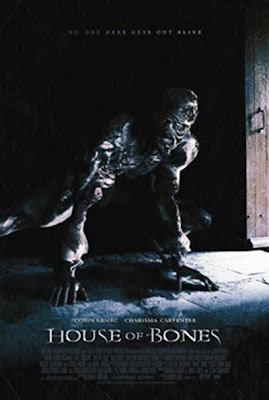
Release Date: 16 January 2010 (USA)
Genre: Horror
Plot:
Corin Nemec (Mansquito, SS Doomtrooper) co-stars alongside Carpenter as TV ghost
hunters that enter a reportedly haunted house that may prove to
be the death of them.
Size: 98 mb
Download Part 1
Download Part 2
na ghar ke na ghat ke by mannu
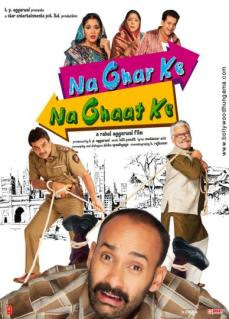
Released : 12 March 2010
Genre : Drama
Starcast : Rahul Aggarwal, Narayani Shastri, Paresh Rawal, Ravi Kissen and Om Puri
Desc :
Na Ghar Ke Na Ghat Ke narrates the tale of village simpleton Devaki Nandan Tripathi (Rahul) who comes to big bad Mumbai to try his luck. A newly married Devaki and his wife (Narayani) end up facing lot of troubles in the city. Though he gets a job at a weather bureau, he is often the butt of jokes by those around him for his naivety and simplicity. A big misunderstanding leads the couple to a police station where a corrupt police inspector (Paresh Rawal) tells Devaki to prove that the couple are husband and wife for real.
Free Hit Counters
Duration : 1hr 50mins
Size : 185mb
Download Part 1
Download Part 2
love sex aur dhoka by mannu

Released : 19 March 2010
Genre : Drama/sex
Starcast : Anshuman Jha ,Shruti ,Raj Kumar Yadav,Neha Chauhan
Desc :
Three stories; three real stories that look at three aspects of a relationship: love, sex and betrayal. A film institute student falls in love with the lead protagonist of his film. A man wanting to make a pornographic clip with a girl in a departmental store changes his mind when he realizes there's more to her than just her plain jane looks. A journalist expert at sting operations meets a girl who wants to end her life for she didn't get what she was promised. He uses his skills in catching the unethical man that wronged her.
Duration : 1 Hour 42 Mints
Size : 122 MB
Download Part 1
Download Part 2
shaapit by mannu
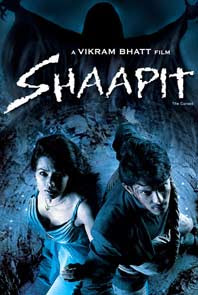
Released : Mar 19, 2010
Genre : Horror
Starcast : Aditya Narayan, Shweta Agarwal, Rahul Dev, Shubh Joshi
Desc :
The story of a girl who is trapped in a generational curse, which does not allow her love & marriage and her lover who vows to conquer this curse to have her..
Duration : 2hr 2mins
Size : 145mb
Download Part 1
Download Part 2
rann by mannu

Released : 29 Jan 2010
Genre : Drama
Starcast : Amitabh Bachchan, Ritesh Deshmukh
Desc :
Rann is about a battle between large unorganised forces (news channels), political parties and industrial czars. These are not just involved in a fight with each other but more importantly and frighteningly they are battling a war within themselves and this is especially true of news channels. Making news is not the easiest thing in the world so the next best thing obviously would be to make anything and everything appear to be news.
Duration : 2 hrs 9 mins
Size : 165 mb
Download Part 1
Download Part 2
Atithi Tum Kab Jaoge? by mannu
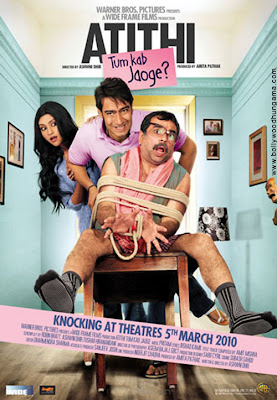
Released : 5 March 2010
Genre : Comedy
Starcast : Ajay Devgan,Konkana Sen,Paresh Rawal.
Desc :
Atithi Tum Kab Jaoge? is the story of Puneet (Ajay Devgn) and Munmun (Konkona Sen), a happily married couple living in Mumbai whose lives take an interesting turn when a distant relative, Chachaji (Paresh Rawal) turns up unannounced at their doorstep from a far off village. The guest overstays his welcome so much so that the exasperated couple come up with various ploys to hasten his departure to hilarious results.
Duration : 1hr 51mins
Size: 130 mb
Download Part 1
Download Part 2
hum tum aur ghost by mannu

Released : Mar 26, 2010
Genre : Comedy
Starcast : Arshad Warsi, Dia Mirza, Sandhya Mridul, Boman Irani
Desc :
In the world of Armaan and Gehna, life is truly beautiful, yet it`s like walking on a tightrope. For Armaan, the fashion photographer, debonair, charmer to the core and loved by all around him life only gets better when he dates Gehna, a high profile fashion magazine editor. Armaan has learnt that his chronic insomnia is however not a function of any sleeping disorder. The truth is that he hears voices; voices that torture him; voices that are disturbing him. More importantly voices that nobody else can hear! Life is less than picture perfect - no one seems to understand his predicament. What puzzles everyone is the fact that he talks to himself… or rather, he talks to people, who no one can see, simply because they don`t live. Soon, Armaan becomes aware of his special ability to connect with the souls that haven`t crossed over.
Duration : 1hr 56mins
Size : 138mb
Download Part 1
Download Part 2
the hills have eyes by mannu

Released : 10 March 2006
Genre : Horror | Thriller
Starcast : Aaron Stanford,Kathleen Quinlan...
Desc :
A suburban American family is being stalked by a group of psychotic people who live in the desert, far away from civilization.
Duration : 107 min
Size : 131 mb
Download Part 1
Download Part 2
Well Done Abba by mannu

Released : March 26, 2010
Genre : Social
Starcast : Boman Irani, Minissha Lamba, Sameer Dattan, Ravi Kissen
Desc :
Well Done Abba is the story of Armaan Ali, a driver working for a Senior Executive in Mumbai, who goes on leave. He wants to find a match for his teenage daughter, who stays with his brother Rehman Ali and his wife Salma. When Armaan returns to work after 3 months his young employer wants to sack him. But Armaan Ali has a story to tell. The story he tells is a humorous and often hilarious account of the events and happenings that delayed him from returning after a month. He avails a government scheme to dig a well in his agricultural patch. Things spiral out of control so much so that the Government is about to collapse! The question remains, how true is this compelling story! The film is a political satire that veers from the farcical to the often witty and sharp but largely ironic comedy without losing sight of its control theme that deals with the many development projects that the government has initiated which frequently get hijacked by systemic corruption.
Duration : 2hrs 38sec
Size : 153mb
Download Part 1
Download Part 2
ford figo by mannu
| #4 (permalink) |
 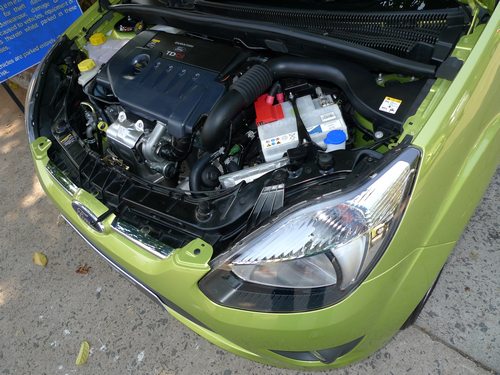 The Fiesta's 1.4 TDCi diesel finds its way into the Figo and is currently the engine of choice (over the 1.2L petrol). This Duratorq unit is rated for 68 BHP (@ 4000 rpm) and 160 NM of torque (@ 2000 rpm). A key advantage of the 1.4 diesel is that, it does NOT have the turbo-lag of the Fiat 1.3 MJD (aka our national engine) used in several other hatchbacks. Actually, the TDCi doesn’t seem to have turbolag at all. I even attempted driving as an amateur who has experienced only naturally-aspirated engines. Despite releasing the clutch pedal carelessly, I did not stall the diesel. This absence of turbo-lag makes city driving in the Figo diesel substantially more convenient than in its 1.3 MJD competitors. Low end throttle response is excellent, making the Figo diesel well suited to our urban driving conditions. The engine is immensely tractable and the driveability of a high order. The 2nd gear can pull clean from as low as 10 kph, and all the way to a notch below 80 kph. Mid-range performance is good, but the 1.4 doesn't have any top end to speak of. The 1.4 TDCi revvs freely to 4,000 rpms. If you insist, the engine will revv on to 4,900 rpms. However, it’s best to work the torque and upshift earlier, even when driving spiritedly. You can feel it running out of breath after 4,000 rpms. Again, the top-end is unimpressive. This engine will do well within the city, but expect dull performance on the highway. NVH levels on the inside are just about average. The diesel is thankfully refined and doesn’t really intrude with unnecessary vibration, including at idle. On the other hand, it can get fairly audible when being worked. Ford says they have used double insulation on the diesel's doors. Maybe they need a triple? The less impressive engine is the 1.2L 16V DOHC petrol. It's an all aluminium unit, derived off the Fiesta's 1.4 petrol. It's easy to tell what family the engine is from. The unit sounds exactly like the other Ford petrols we’ve had in India. The Duratec petrol is rated for 70 BHP (@ 6250 rpms) and 102 NM of max torque (4,000 rpm). Both, the outright power and torque ratings are lower than competition. The Ritz K series is rated @ 84 BHP / 112 NM of torque (soon to arrive in the Swift), while the i10 1.2 Kappa churns out 79 BHP / 112 NM torque. Expectedly, outright performance is strictly average. One advantage, relative to the competition, is the low end throttle response (typical of Ford petrols). In thick traffic, it does not need to be revved as much as say, the 1.2 Kappa unit. The 2nd gear can work right from 10 kph itself. Thus, after crossing a speedbreaker, you can drive off in 2nd (no need to downshift to 1st). The third only at 30 kph and above. Within the city, I don’t expect you to downshift from 2nd to 1st as often as you will from 3rd to 2nd. Throttle response is decent, its not overtly sharp but neither is it too dull. Thanks to the power ratings, and the Figo's European build, there isn't a doubt that you need to work this engine to make progress on the road. It's relatively free-revving up until 5,500 rpms, progress is rather slow afterward. You can stretch higher to over 6,000 rpms, but I wouldn’t bother. Good thing that the engine doesn’t feel coarse after 4,000 rpms. Ford claims a 0 – 100 kph timing of 15.5 seconds for the petrol and 15.8 for the diesel. If I were to rank the 1.2 L petrols in order of competency, it would go thus : Ritz 1.2 > i10 Kappa > Figo > Punto > Fabia (3 cylinder). Either engine uses the same (IB5 Ikon) gearbox with slightly different final drive ratios. The gearshift has reasonably short throws and the shift action is positive. The unit is a sure-slotting one and you won’t choose the wrong gear erroneously. Note that it isn't an ultra-slick Japanese box and does require a little effort. A USP of nearly all Ford cars sold in India has been that they are amazing to drive. Ford's DNA boasts of amazing handling with an acceptable (not plush, acceptable) ride. This trait completely extends to the Figo. The suspension behaviour is very mature, classic European stuff, and similar to the Fiesta. The ride quality is compliant; it’s not plush, nor is it uncomfortably stiff. The correct terms would be “compliant” and “composed”. We drove rather spiritedly on Goa’s internal roads, some of which have all kinds of undulations. The rear stays planted. It’s not bouncy like the tall boys, nor is there unnecessary vertical movement. The suspension damping is perfect with the Figo’s suspension staying composed even on uneven tarmac. Of course, the firmness will make those super large potholes harsh on the inside. Unsurprisingly, the ride is much like that of the Fiesta. The driving experience starts with the steering : No electric steering rubbish here, the unit is pure hydraulic and the steering unbelievably direct. You can chuck the car in and out of gaps with a mere flick of the steering. The PS is very quick making the Figo one of the rare cars that you can have fun driving at <80 src="http://www.team-bhp.com/forum/images/smilies/wink.gif" alt="" title="Wink" class="inlineimg" border="0"> The steering requires distinctly lesser effort than the Fiesta's at 0 kph parking speed. Within the city, the steering is sufficiently light. Not feather light like an i10s, yet no one will complain of the effort required. The clutch action is light too. This combined with a positive gear shift and good low end response (from either engine) makes the Figo well suited to Indian cities. I know for a fact that the 1.6 100 BHP Fiesta engine will make its way into the Figo sometime in the future. When it does, the lineup is complete. A fuel-efficient diesel for the mileage conscious and a 100 BHP petrol stonker for us enthusiasts. __________________ |
 |
| | #6 (permalink) |
| The Smaller but Significant things: Long key. Boot release button too. These type of soft-plastic buttons break after 2+ years of use (based on my experience of using a similar key in the Benz). Dedicated hard plastic buttons are better on durability: 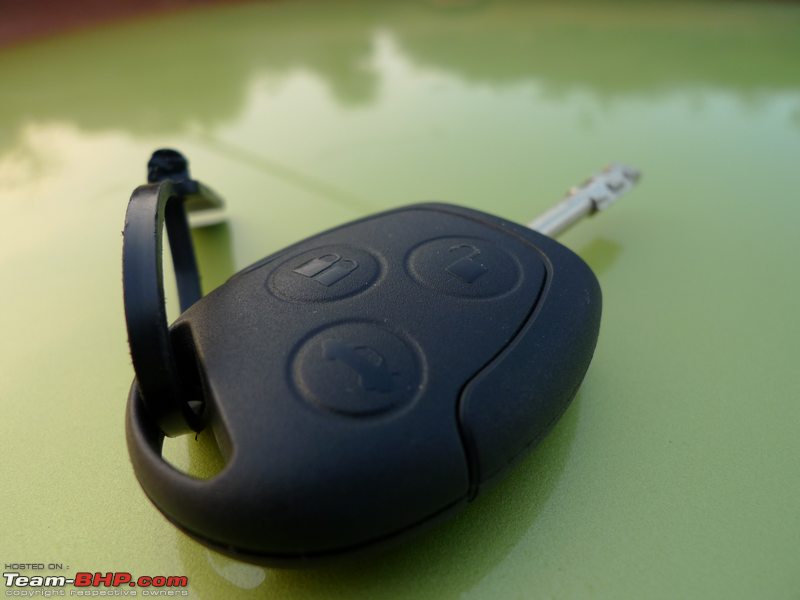 In case you go "no bottle holders?", door pockets are even marked “one liter” with an image of a bottle and the direction it should sleep in:  Fairly unrestricted front air dam: 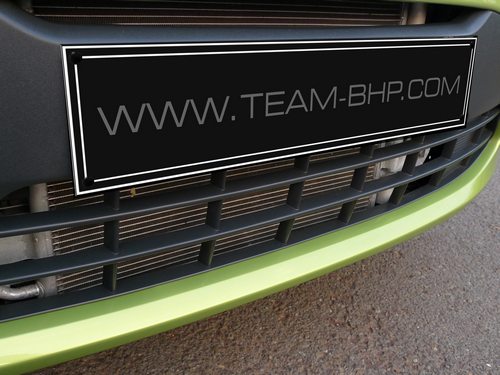 Bonnet release positioned on the passenger side. Not cool: 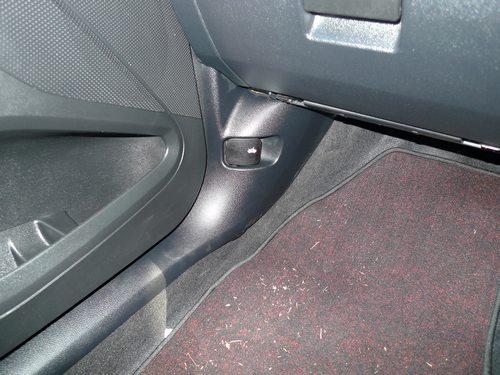 Nice circular air-vents that swivel, thus you can adjust the airflow anyway you want. You can also shut any particular airvent, though some amount of air still flows through. Notice storage spot right behind on top of the dashboard:  Thick rear pillars. Medium sized rear windscreen and side glasses help matters whilst reversing: 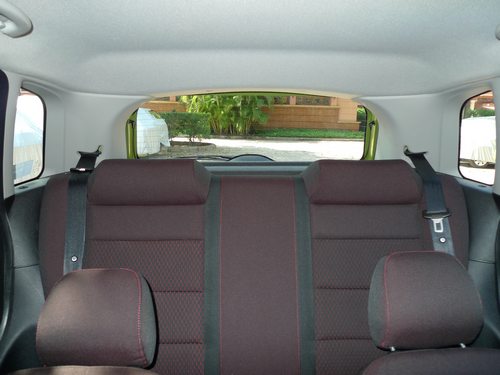 When was the last time you saw felt lining on the door insulation? Sweet:  The feel of the air-con switches is pretty rudimentary. They feel “economy segment” to use:  Rear hatch has a useful grab handle on the inside: 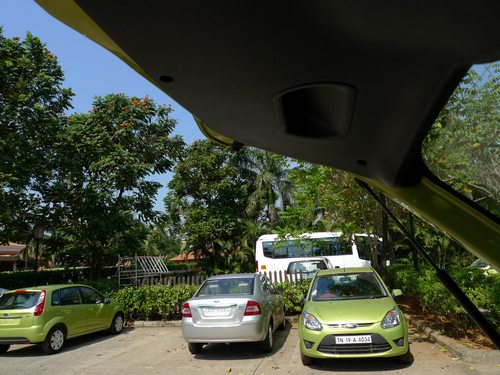 No rear power windows. Door armrest has a storage spot:  Front foglamps: 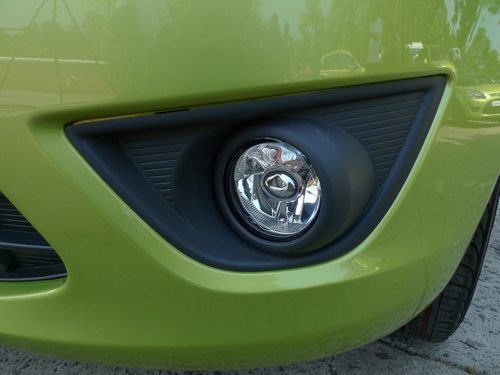 Medium-sized ORVMs. Convex mirrors cover the road well.  Top end variant = Titanium:  Another look at the bulging wheel arches and the uniquely styled turn indicator light:  Have I spoken enough on what I think of the dash colour? Or should I start again.....A view from the passenger's side:  |
tata manza full review by mannu
| # |
| The original Indigo did well for itself. The Indian market bought 275,000 of them since the time of launch in 2002. Today however, in 2009, the 6 lakh rupee sedan segment is more competitive than ever. Not only are there more sedans jostling for space in this price band, but we also have premium 6 lakh rupee hatchbacks (e.g. Hyundai i20) that the Indian car buyer has taken a soft spot for. As an owner of a previous-generation Tata Indigo TDi, I am able to comment on exactly where Tata has made progress. And after a test-drive, I walked away impressed. Tata's engineering department has put a lot of thought into this car and it shows. Their Gen I cars were entirely forgettable (Estate especially), Gen II was Tata learning the ropes + maximising the diesel advantage (Indica, Indigo) while the Gen III cars (Manza, Vista, Nano) is Tata Motor’s coming of age. The Manza has undergone 23 lakh kms of testing; that’s over and above the Vista’s 25 lakh kms of testing. The Manza is assembled on the exact same production line as the Linea, at Tata-Fiat’s Ranjangaon facility. There’s a good and a bad side to that. The good : Paint job quality and exterior fit & finish are superb. Even the panel gaps are largely consistent (though the odd irregularity is present). The bad : Fitment of some rubber parts & interior bits is iffy (more on that later). The sales split between the regular Indigo sedan and the CS has been 50:50. The regular Indigo sedan has been discontinued with the Manza’s launch, yet the Indigo CS, XL and Marina will continue to serve their niche segments. Note: Click any picture to open a larger version in a new window.  Walk up to the Manza and the first thing that hits you is that it looks like a proper sedan. The boot is better integrated than in the Indica-Indigo or Swift-Dzire siblings. The Manza does not look like a hatchback on which a boot was stuck on, as an after-thought. Nope, its not going to win any beauty contests either, but the design is par for the C segment. Up at the front, the 4 component headlamp design looks contemporary and totally non-Tata. The bumper, headlamps and grille treatment are different than that of the Vista, Tata’s way of giving the Manza its own identity. Indians love chrome and the Manza has dollops of it! The top-end variant has a chrome lining running around the entire car, the radiator grille has chrome slats, the door handles have chrome and there’s even a thick chrome plate above the rear number plate. One look at the rear and it seems as if Tata was inspired by the Cadillac of the 80's. I like the slightly squarish rear end with thin tall lights. Clean and uncluttered. The maroon colour of our test car, in particular, looks rich (same paint booth as the Linea). Tata’s trying to go a li’l premium with this car. Case in point : Take a close look at the door handles. Clean side profile. Does anyone else think that the doors have an uncanny resemblance to the Ford Fiesta’s?  Carrying on the Tata family look:  Striking headlamp design:  There’s a reason why Tata shod the Manza with 15 inch wheels as standard. 14 inchers would have looked way too small. Even the 15 inch wheels look small from some angles. Neat wheelcap design. No alloy wheels even on the top-end:   Premium-looking chrome lining on the door handles:     Next to its sibling, the Vista. Notice the rubber cladding at the bottom of the front bumper. Protects the paint from scrapes:   __________________ GTO Work backward from your imagination, not forward from the past!
|
| |
| #4 (permalink) |
 India’s “national engine”, the 1.3 Fiat MJD, finds its way into the Manza’s engine bay as well. The diesel is rated at 89 BHP (4,000 rpm) and 200 NM of torque (1,750 – 3,000 rpm). Yup, it’s running the Linea spec engine (with slight changes) and variable geometry turbo here. Translated = No swift-like punchy turbo kicking in. Rather, the turbo action is subtle in nature. Even though the spec sheet says that the torque comes in at 1,750 rpm, you don’t really feel much acceleration until crossing 2,000 rpm (turbo seems to really start spooling only after 1,800). And despite a variable geometry turbo, turbolag is noticeable and definitely takes some getting used to. Once you learn to keep the engine on the boil (use the right gears to stay above 2,000 rpms), its easy to drive in a pretty spirited fashion around the city. The 1.3 is fairly revv-happy and will go on till slightly over 5,000 rpm. However, the most useful revv range is between 2,100 rpms – 4,100 rpm; the Quadrajet makes maximum BHP at 4,000 rpms. There really is no point for you to revv beyond that. Best to shift up early and work the torque. What I would do in a regular driving style : Upshift in the early 2,000s and go over 4,000 only during a spirited drive or when it’s necessary to overtake that truck in the same gear.  The diesel’s mid-range is useful. Even on an old school highway, overtaking 80 kph trucks is not a problem at all. But choosing the right gear (staying within the engine's power band) is important. On the expressway, she was easily cruising at 140. Beyond this, the Manza starts running out of breath and progress is slow (1.3 liter engine after all). You can stretch her legs to a realistic 165 odd kph, but it’s simply not worth it (reasons below, in the “handling” paragraph). This car is best driven as a sedate (safe) comfortable cruiser. The turbo-lag raises its ugly head on a steep incline. If you come to an absolute stop midway, you will have to generously slip the clutch (surely not a good thing). The 1.3, ironically, feels a tad more spirited in the Manza than in the Linea. The Manza's power to weight ratio (74 BHP / ton) is superior to the Linea (66 BHP / ton) and Dzire (69 BHP / Ton). Yet, the Dzire feels the most sprightly, probably due to its lower gearing and punchy turbo action. The Manza is running taller gearing in the interests of fuel efficiency. The Fiat C549 gearbox makes for the best gearshift quality seen on a Tata yet. It’s not a short-throw (medium length shifts), and has some notchiness, yet the gear-shifting action is decent. The lever itself falls nicely to your hand and finding gears is not a problem at all. This is a substantial improvement over the previous gen Indica / Indigo whose gearshift felt akin to moving a stick through a cement mix! There isn’t any drivetrain movement on the gearlever either (i.e. no shaking when accelerator is pressed). The clutch action is positive too, absolutely no vagueness, though the return action is slightly aggressive. The insulation from engine sound is good under 3,000 rpms, and at cruising speeds, passengers will be hard-pressed to tell if there is a diesel under the hood. Engine noise only gets noticeable over 3,000 rpms. The NVH levels are excellent by Tata standards. In fact, I didn’t even hear the loud drone that I experienced in the Punto a couple of weeks back. Even at 130 kph, the only thing you hear are the tyres and some amount of wind noise. The Manza’s ride quality is superb and will keep you very comfortable over your daily runs. The ride is perfectly cushioned for the city; not too soft nor too firm. Spend 10 minutes in the Manza and the Dzire; I’m willing to bet you will jump back in the Manza for the rest of the journey. The ride is good on a flat expressway too. One doesn't need to slow down for broken road patches either. However, we noticed that at high speeds, and when the road surface is undulating (up and down), the rear keeps moving vertically. Rear passengers will complain of bounciness and ask you to slow down. Due to this factor alone, you'd do well in restricting your speed to 100 – 110 on an old school uneven Indian highway. The rear suspension is no longer independent (as it was in the previous Indigo). Handling is safe enough for a family sedan. Grip levels are decent, and the chassis behaviour predictable. The 185 patch tyres are also playing their part here. You don’t need to be overtly conservative as you would in the older Indigo around corners. The handling is fairly neutral and w-a-y improved over any Tata yet. High speed stability is decent until 140 kph, though there is absolutely no comparison to the Linea which is in a different league by itself. Know her limits and you'll be safe. Drive enthusiastically and understeer rolls in easy if you keep the throttle nailed in a corner. It won’t take you aback like the older Indigo did, rather the understeer is progressive and all you need to do is lift off the pedal to bring it back in line. Above 140, you can feel the wind forces acting on the car. Push further, a sense of “waftiness” builds in and one needs to make constant steering corrections to keep the Manza in line. Be conservative with sudden direction changes at high speed. I reiterate, this sedan is best driven demurely as a comfortable highway cruiser. The hydraulic power steering has some vagueness in the center position, and one can feel a little resistance (aggressive center return action?) just when moving to the left or right. Importantly, and in a major improvement over the previous Indigo, the steering is no longer super light at speed. It weighs in sufficiently well and is safe for 130 kph expressway cruising. Again, the Linea’s steering is on an altogether different level here. Don’t expect any driver feedback in the Manza. Within the city too, the steering is perfectly weighted. Not too heavy nor too light (like the previous Indigo). No complaints on this front. The turning radius is 5.1 meters (Dzire = 4.7 and Linea = 5.5). What’s immediately evident upon your first drive in the Manza is the excellent braking system. Slam it at 130 and there is absolutely no left or right swerving; she comes to a clean halt. One of the most substantial improvements of the Manza is its braking capability. Get this; on Tata’s test track we slammed on the brakes at 80 kph. The Manza stopped with zero fuss. Next, I slammed the brakes at 130 kph and left the steering wheel. No direction change at all! She came to a halt again with no drama. The ABS system is well calibrated as well. These are the best brakes on any Tata vehicle yet, and in line with the best of the C segment. Kudos! Brief report on the 1.4 Petrol: Unlike the 1.3 diesel which Tata has retuned, the 1.4 petrol feels nearly the same as in the Linea. This unit is rated at 89 BHP @ 6,000 rpms and 116 NM of torque at 4,750 rpms. The 1.4's power delivery is more linear than in the 1.3 MJD (which has turbolag) and urban driveability is good. The 2nd gear pulls clean and is a vital tool within the city. As in the Fiats, this is a motor that needs to be worked to perform. It's smooth and revv-happy (fuel cut-off at 6,600 rpms) and is fun to work through the gears. Yup, the engine has that Italian growl at high rpms too (non-enthusiasts can get annoyed). However, it is the 1.3 diesel that is most relevant to the Manza. Both engines have an identical horsepower output, while the diesel has about 70% more torque. I would anyday recommend the diesel Manza over the petrol. For its superior torque, fuel-efficiency and expectedly better resale. Consider the petrol Manza only if your running is too low to warrant a diesel. Entry diesel prices (Delhi ex-showroom): Dzire : 548,554 Manza : 570,000 Fiesta : 693,000 Linea : 701,985 Verna : 753,016 Price of first variant with ABS (Delhi ex-showroom): Manza : 629,000 Dzire : 674,124 (with airbags. No variant with ABS only) Fiesta : 737,000 Linea : 750,994 Verna : 804,926 Price of first variant with ABS AND Airbags (Delhi ex-showroom): Dzire : 674,124 Manza : 675,000 Fiesta : 799,000 Linea : 835,000 Verna : No variant with airbags __________________ |
| |
Other points: • Link to our old Manza test discussion which ran 29 pages long. • 2 year / 75,000 kms warranty as standard. 4 year / 150,000 kms warranty available at an additional cost of Rs. 5,000 odd. Well worth it IMHO! Even if you take only the 3rd year extended option, it’s still valid for 150,000 kms. • Tata needs to learn how to diet. The Manza diesel tips the scales at 1,200 kgs, a full 110 kilos more than the Dzire! • ARAI Fuel efficiency numbers : Manza 21.02 kpl and Maruti Swift Dzire 21.00 kpl. The Manza's taller gearing + retuned engine at play here. • Only wish the top end variant had a rear air-con blower. Rehaan commented that the rear air-con could also be part of an armrest storage space for the front passengers. Atleast on the top end, Tata! • A worthy alternative to the Dzire. The 1.5 lakh more expensive Linea should be worried. • The Tata Motor’s presentation frequently brought up the Honda City and the Toyota Altis. It’s clear that their space benchmarks were from a segment higher. And apparently, there’s more front room than in the City! • Not exactly an obstruction, but the rear left passenger will be able to feel the storage drawer (positioned below the front passenger seat) if he stretches his toes or lifts his foot up. • The Vista is not sold to the taxi market, nor will the Manza be. Not at least, initially. • Trim levels are exactly the same across petrol & diesel variants. • Rear doors need a strong slam to shut. A throw-back to the old days! • Center lights are actually not positioned at the center, but about 65% toward the back. Reason? Within an arms reach for rear passengers. Really thoughtful. Of course, there is a separate front interior light console too. • Relatively narrow seat back pockets. Probably just enough width for a magazine (if at all). • THICK cladding under the hood and the boot area. For sound insulation. • Fuel tank capacity = 44 liters. • A li'l birdie insists that the Tata Manza electric is on the way. • I wish that the interior designers had used a shade other than the dark grey (dual tone interiors). The light beige is nice, but the other darker shade looks like a grey of yesteryear. • The diesel and petrol variants, both, have the same revv meter. It’s a little odd to drive a diesel car with a revv counter that goes all the way to 8,000 rpms! Heck, that’s the max that my high-revving 7,100 rpm redlining OHC Vtec is marked till. • Dashboard reflection can get annoying under direct sunlight. • Rear neck restraints (headrests) are a neat place to park your head on (whether you are tall or short). • Ground clearance of 165 mm. Nope, we didn't scrape the underbelly anywhere in our test that covered varied driving conditions. • Boot and fuel lid openers are clearly marked. No chance of confusion between the two (as is the case in some other cars). • 185/60/15 tyres standard on all variants (even the base). All the test cars we saw had Bridgestone tyres as standard. • Motorised headlight adjustment (beam height) is via the right headlight stalk itself. • Steering wheel buttons are small and made of thin rubber. I have my doubts on how long that rubber covering is going to last. • Accelerator pedal is super light. Drive-by-wire tech. The clutch action is par for the segment. This is not a car that women will complain about driving. • The car looks smaller in person than the promotional materials would have you believe! • Glass used on the audio system display looks rich. Has a subtle tint as well. • Seat belts are NOT height-adjustable. • Only driver power window has auto down. No auto up. • Even under direct sunlight, there is no glare on the instrument console at all. • Gear knob is wrapped in leather. But not the steering. • I wish Tata has simply called the Manza a “Tata Manza”. Why bring in the Indigo badge here? • Bluetooth integration can also stream audio from a Bluetooth device. • For someone who takes the driver seat back all the way (very reclined too), the right hand side mirror didn’t extend out as much as I’d have liked. On the other hand, the left side ORVM was okay. • Pretty loud seat belt warning chime (if you haven’t worn your belt). You cannot ignore. Unfortunately, only for the driver (not passenger). • Airbags + ABS available for the first time in a Tata sedan. Steering column is collapsible too. • Door handles have small coin holders (right below the power window controls). However, you’d rather not keep coins there else they will make quite a racket (hard metal against hard plastic). • Definite glare on the MID during the day under direct sunlight. • Nope, there certainly isn’t a need for a Manza XL variant (a la Indigo XL) at all. Rear legroom is generous. • Want to know why the Logan flopped? Get this : The top loaded Manza is cheaper than the top loaded Logan today. It’s really all about the right costs + VFM pricing in the C segment. Just ask Dzire. • Seven colour options : Champagne gold, White, Maroon (our test car), Dark grey, Silver, Blue and Black. __________________ GTO Work backward from your imagination, not forward from the past!
|
 |
| #6 (permalink) | |
| The Smaller yet significant things: Classy smallish meters with the now ubiquitous silver outlining:  Multi-information display throws out info on distance to empty, real time fuel efficiency, averaged fuel efficiency and exterior temperature. The real time & average fuel efficiency figures fluctuate quickly:  Larg'ish steering wheel is nice to use:  An example of the lapse in fit & finish:  Note that mirrors swing the opposite way too (crucial in India where they are knocked everyday by pedestrians + bikers). Tata knows Indian conditions way too well to overlook such a vital design requirement:  Uniquely positioned side indicator lamp at the bottom of the A pillar:  Rubber blocks on the spare wheel cover look so "jugaad":  Remote control for the audio system. Good for back seaters. Slim size, I bet that you will be frequently searching for it:  Sweet looking door scuff plates:  Lockable glove box runs looooog inside. Has its own light too. Can probably store some books or a small laptop in there. Has spots to hold a pen and business cards:  Rear bench armrest a comfortable spot for your arms. Two large cup holders (with rubber padding!!) too:  Euro-design rear headrests:  Long key. Keyless entry (lock / unlock buttons):  Effective handbrake. Notice the non-slip rubber padding on the storage spot right below:  12V socket for rear benchers. Surf Team-BHP on your laptop all the way to Goa! Thanks to BHPian "Bouncer" for the pic:  Front passenger airbag can be switched off (say, if there is a child on the front seat):  Vanity mirror has useful lights on either side:  That's the space with me in the driver's seat. "Shoes of the year award" to friendly Moderator Dippy:  Center light positioned 65% toward the rear for easy access to the chauffeur-driven "Seth":  Inexplicable!! Screenshot captured on 29/10/2009. Tata's website still shows the discontinued Indigo, and not a mention of the Manza (on the main Tata cars page):  |
Subscribe to:
Comments (Atom)
currency convertor
like us
About this blog
This blog is for entertainment,downloads,
enjoyable website
enjoyable website
Time vekho yaar!!
Labels
- 3d (8)
- apple iphone (14)
- bollywood movies (26)
- cars (1)
- daily hukamnama (3)
- fonts (1)
- games (4)
- graphics (3)
- hollywood movies (8)
- internet (2)
- logo (1)
- mobile (2)
- mobile_pc appz (2)
- mobiles (15)
- multimedia (11)
- muzik (1)
- my dreams (1)
- news (9)
- only for me (1)
- plugins (1)
- psd (1)
- punjabi songs (6)
- songs (10)
- window vista (4)
Blog Archive
-
▼
2010
(49)
-
►
April
(12)
- AUTODESK MOTIONBUILDER 2011 by mannu
- AUTODESK 3DSMAX & AUTODESK 3DSMAX DESIGN V2011 by ...
- unborn by mannu
- the house of bones by mannu
- na ghar ke na ghat ke by mannu
- love sex aur dhoka by mannu
- shaapit by mannu
- rann by mannu
- Atithi Tum Kab Jaoge? by mannu
- hum tum aur ghost by mannu
- the hills have eyes by mannu
- Well Done Abba by mannu
-
►
April
(12)
Copyright 2009 -
an upcoming millionare
Web Designer India: Ray Creations. Sponsored by Web Hosting India.
Web Designer India: Ray Creations. Sponsored by Web Hosting India.
























